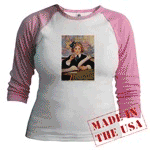| Introduction | Annotated Tales | eBooks | Bookstore | Illustration Gallery | Discussion Board | Blog |
 |
|
|
SurLaLune Fairy Tales began as a class project and has grown into a large educational website. As it has grown, I have designed this site for use in the classroom or to help with lesson plans about fairy tales. While most of the academic materials are intended for a high school or college level student, there are many areas that should be useful at the elementary and middle school levels, especially the fairy tale variants and the illustrations. The following is a guide to help you make better use of the site and the resources it offers. First, let me emphasize that teachers and students have my permission to link to this site or print pages from it for classroom or personal use. Please always credit the source of the materials and do not copy this material onto your own site. There is a lot of information and illustrations, including over 1,500 illustrations and 1,200 full text tales with many variants of the annotated tales on the site. Each of the tales have been annotated with a wide range of information. The following is a description of the information provided for each tale. You can see an example of an annotated tale and its related links on The Annotated Cinderella Page. Annotated Tale SurLaLune offers a full text version of each tale from an out-of-copyright resource, many with hyperlinked textual annotations found on the Annotations page. While the text is not necessarily the definitive version of the tale, it is a close representation of the tale as it has often been presented during the last century in English language publications. For the text of the first known English translations of the tales, please see Peter and Iona Opie's book, The Classic Fairy Tales. Note that these are not the definitive translations either, but only the first English translations of the tales. Often the tales were censored when they were first translated. Annotations On the Annotations page you will find the hyperlinked textual notes to the tale found on the Annotated Tale page. Some of these are more complete than others. All of the sources are cited and can be found on the tale's Bibliography page. History The History page offers a brief history of the literary version of the fairy tale. It traces the translations and some of the variants. Often the history will briefly address modern interpretations of the tales, too. Illustrations The Illustrations page links to the illustrations for the tales by many Golden Age illustrators, such as Walter Crane, Arthur Rackham, Edmund Dulac, and Kay Nielsen, as well as more obscure illustrators from the same time period. These pages are extensive and are a wonderful resource for discussing art and personal interpretations of the fairy tales. The illustrations provide a great scope for comparison and contrast studies of the tales and the artists who illustrated them. Questions I like to ask include: Which illustrator most closely represents the way you imagine the story? How does the illustrator make certain characters appear scary and/or kind? Are some images of Bluebeard or the Wolf in Little Red Riding Hood scarier than others? Similar Tales Across Cultures The Similar Tales Across Cultures page is a bibliography of tales from cultures around the world that are similar to the Annotated Tale on the site. When an out-of-copyright version of the tale is available, I have provided it in full text on SurLaLune or linked to a full text version elsewhere on the web, most often at D. L. Ashliman's wonderful website. These tales are great for multi-cultural studies or for discussing archetypes and themes which appear in our global literature. They also provide the means for a simple comparison and contrast study in the classroom. Many of these tales are of the same AT classification type, the system developed by Atti Aarne and Stith Thompson. Note that some of these tales are not necessarily suitable for elementary school students. Please read the tales carefully before using them in your classroom. Modern Interpretations The Modern Interpretations page provides a bibliography of 20th and 21st century interpretations of the fairy tale in novels, poetry, short stories, film, music, and theatre. Usually there is a link to the book, poem, etc. on Amazon,com or elsewhere on the web. To read more about many of the modern interpretations of the tales, I highly recommend Gail de Vos and Anna Altmann's New Tales for Old and Tales, Then and Now. Bibliography The Bibliography page serves as both the works cited page and as a resource for further secondary reading on the tale. Book Gallery The Book Gallery page is a virtual museum of book covers of picture books and other interpretations of the tale. Since the modern day picture books of the tales are under copyright protection, I can only offer the book covers to show the illustrative work of recent illustrators. The gallery provides an interesting contrast to the work represented on the Illustrations pages. |
|
| ©Heidi
Anne Heiner, SurLaLune Fairy Tales E-mail: heidi@surlalunefairytales.com Page created 6/1999; Last updated 7/2/07 www.surlalunefairytales.com |










